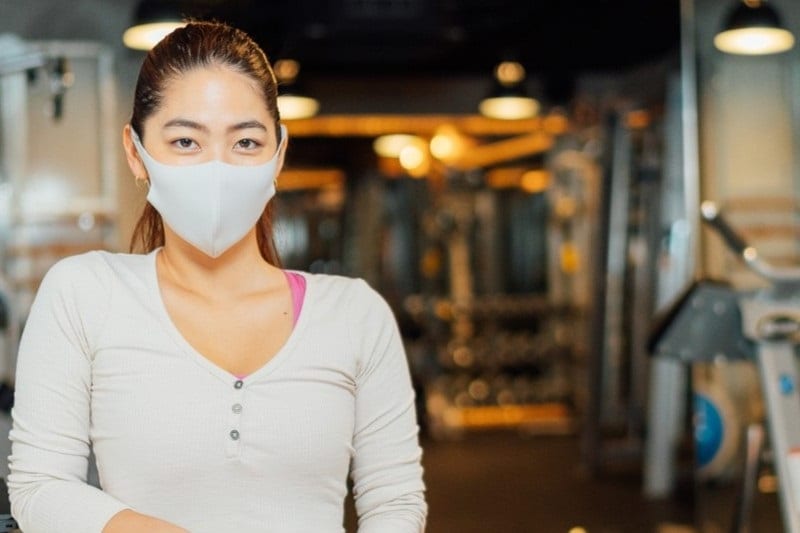Working out while wearing a face covering is a training technique often used to simulate exercise in high altitudes. But, for the pandemic-initiated, it’s a foreign practice that requires some adjustment of effort, a little time, and a bit of math.
Follow these top five tips for masked workouts to stay healthy and get stronger when wearing a face covering.
Tip 1: Pay attention to intensity
Whether you’re just starting out or you’re a frequent gym-goer, it’s important to quantify your effort so you can progress your training. One way to do this is rate of perceived exertion, a subjective scale that rates effort from 1–10. This simple method is surprisingly effective for influencing exercise intensity and becomes more accurate with experience.
Use this EXOS tool to measure your rate of perceived exertion and, along with your trainer, decide where you’d like to keep your heart rate. Then listen to what your body is telling you!
Tip 2: Wear a clean, dry, comfortable mask
The material that covers your mouth and nose will restrict airflow and collect moisture at different rates. Choose a face covering that is clean (washed and preferably ironed to dry), fits snugly to your cheeks, covers your mouth and nose, and is comfortable to breathe in before you start exercising. Keep a few clean masks ready to go for each workout and carry an extra with you. It’s harder to breathe through a wet mask, so change to a fresh one during your workout if needed.
Tip 3: Give yourself time to adjust
Just like with any new fitness challenge, your body needs time to adjust to this new version of altitude training you’re doing when wearing a mask. If you get dizzy, lightheaded, short of breath, or overly fatigued, dial back the intensity or step away to remove your mask until your body is once again fully oxygenated. Your cardiovascular system will adapt to this new challenge of slightly decreased oxygen availability, but it may take a few weeks before you’re back to pre-mask workout intensity levels while wearing the mask.
Try these breathing exercises to fully oxygenate and recover after your workout.
Tip 4: Focus on optimizing nutrition and rest
Depriving the lungs and muscles of oxygen is hard enough without adequate hydration levels and recovery time. This is also not the time to skimp on sleep or eat poorly. Give your body all the support it needs to adapt and make progress during masked workouts, and you’ll be ready to scale mountains in no time.
Tip 5: Know when it’s not the best idea
A few health conditions could make masked workouts a bad idea. If you have a pre-existing medical diagnosis that involves decreased heart or lung function, consult your physician before working out while wearing a face covering. Other indications that you may need to seek a doctor’s advice include dizziness after your workout (with or without a mask), continued shortness of breath, light-headedness, or pregnancy. Your doctor may advise against exercise with a mask, or may just ask you to work out a lower intensity and be aware of your breathing and any feelings of dizziness or light-headedness.


